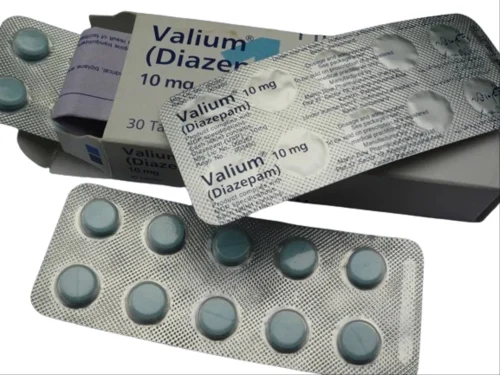Valium 10mg, a benzodiazepine medication manufactured by Martin Dow, is commonly prescribed for its anxiolytic, sedative, and muscle-relaxant properties. While its primary mechanism of action involves enhancing the effects of gamma-aminobutyric acid (GABA) in the central nervous system, recent research suggests potential interactions with the endocannabinoid system (ECS), offering insights into its analgesic effects for pain relief.
- Endocannabinoid System Overview:
The ECS comprises endogenous cannabinoids (e.g., anandamide, 2-arachidonoylglycerol), cannabinoid receptors (CB1 and CB2), and enzymes involved in cannabinoid metabolism.
CB1 receptors are primarily located in the central nervous system, while CB2 receptors are predominantly found in peripheral tissues, including immune cells.
- Interaction with CB1 Receptors:
Valium 10mg By Martin Dow may indirectly modulate the ECS by enhancing the activity of GABAergic neurotransmission, leading to downstream effects on CB1 receptor signaling.
Activation of CB1 receptors by endocannabinoids or exogenous agonists, such as delta-9-tetrahydrocannabinol (THC), produces analgesic effects by inhibiting neurotransmitter release and dampening pain signaling pathways in the spinal cord and brain.
- Modulation of Pain Pathways:
By potentiating GABAergic neurotransmission and indirectly activating CB1 receptors, Valium 10mg may modulate pain pathways at multiple levels of the central nervous system.
This modulation results in the suppression of nociceptive signaling, reduction of neuronal excitability, and attenuation of pain perception, contributing to its analgesic properties.
- Anti-Inflammatory Effects:
Activation of CB2 receptors, particularly in peripheral tissues and immune cells, mediates anti-inflammatory effects and immune modulation.
While Valium 10mg primarily acts on CB1 receptors, its indirect modulation of the ECS may contribute to the overall anti-inflammatory and analgesic effects observed in preclinical and clinical studies.
- Clinical Implications:
Understanding the interaction of Valium 10mg with the ECS provides insights into its potential utility as an adjunctive therapy for pain management, particularly in conditions associated with central sensitization, neuropathic pain, and inflammatory pain.
Further research is warranted to elucidate the precise mechanisms underlying the analgesic effects of Valium 10mg via ECS modulation and to explore its therapeutic potential in various pain syndromes.
Conclusion:
Valium 10mg by Martin Dow interacts with the endocannabinoid system, primarily through its modulation of GABAergic neurotransmission and downstream effects on CB1 receptor signaling. This interaction contributes to its analgesic properties by suppressing pain signaling pathways, reducing neuronal excitability, and potentially exerting anti-inflammatory effects. By elucidating the mechanism of action of Valium 10mg within the ECS, clinicians and researchers can gain a deeper understanding of its therapeutic effects for pain relief and explore novel treatment strategies in pain management.
